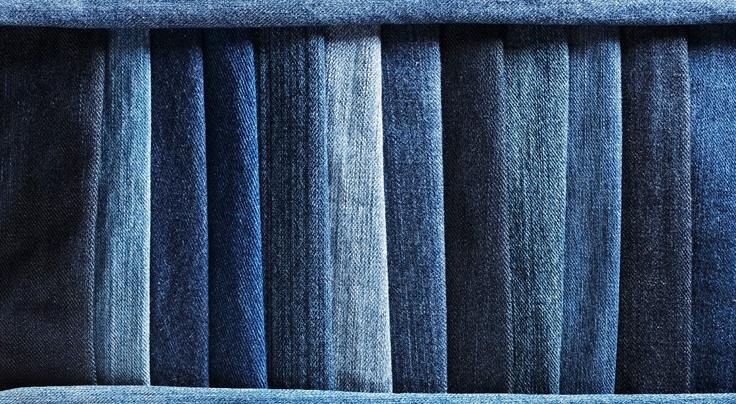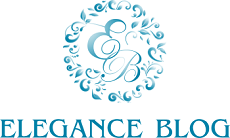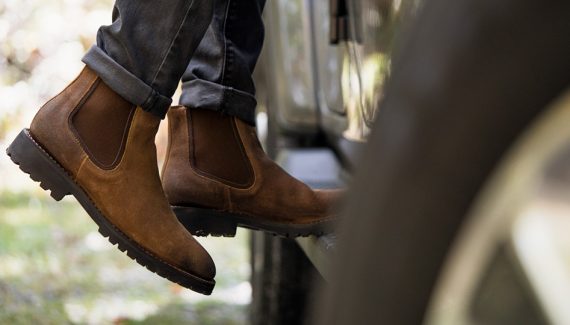The fashions of today are incomplete without denim, which is arguably one of the most universal fabrics in the world.
While most commonly associated with blue jeans and jackets, denim is an incredibly versatile fabric that comes in all forms, looks, and washes. Whether you dress casual, chic, soft boy, or goth, every good wardrobe has at least a couple standard denim pieces to pull any look together.
Now, understanding the different kinds of denim fabrics and their unique features will make denim shopping much easier. In this guide, we’ve covered the eleven types of denim fabrics, denim weights, and the best quality denim to look out for.

Image Credit: sewguide
Contents
11 Types of Denim
Let’s begin!
1. Selvage Denim:
Also known as self-edge denim, selvage is a unique kind of denim. It is defined by a clean natural edge that prevents fraying and does not unravel.
It is made with one continuous cross yarn, resulting in a strong, durable fabric that stands the test of time. The selvage edge is usually stitched with coloured thread, with red and orange being the most common. Brown, yellow, green, and white are also used.
Considering its durability and complex construction process, selvage denim is relatively more expensive than other types.
Browse through Maplestore’s collection of selvedge denim for great pieces to add to your closet.
2. Organic Denim:
Organic denim is manufactured using 100% organic cotton. All types of chemicals and artificial products are excluded from the manufacturing process, resulting in a fabric that is 100% natural.
3. Raw Denim:
As the name suggests, raw denim is the fabric in its purest form when it has not been washed or treated in any way. Also known as dry denim or unwashed denim, raw denim is quite stiff to wear and can last a long time. It is dark blue, and the color slowly fades away upon washing over time.
4. Stretch Denim:
Stretch denim is typically made from a combination of spandex, polyester, and cotton. These are stretchier, more comfortable fabrics, while their non-stretch counterparts can feel rigid and restrictive when it comes to movement. This is mainly used for tight-fitting clothes like skinny jeans for fashionable and comfortable wear.
5. Sanforized Denim:
Sanforized denim is raw denim that has been treated for shrinkage. Sanforizing the denim stops the fabric from shrinking but retains the rough and stiff texture of denim that hardcore denim fans enjoy.
If you purchase jeans or jackets made with raw denim, it’s important to know if the fabric has been sanforized. If not, you may want to buy one size up to allow for shrinkage. This type of denim will typically be labeled as “pre-shrunk.”
6. Stonewash Denim:
Stone-wash denim is characterized by a slightly distressed, vintage, uneven finish. This type of denim gained popularity in the 1960s and has been weaving in and out of fashion trends since then.
Stone wash denim gets its name from the old processing method, where pumice stones were rubbed over the denim to wear down the fabric, giving that distressed, worn-out finish.
7. Acid Wash Denim:
Acid wash denim has that faded, washed and worn, mottled look that became popular in the 1980s. If you’re putting together a grunge aesthetic or a casual, street-style look, acid-wash jeans are the way to go.
To create acid was denim, a pumice stone is soaked in chlorine and rubbed across the fabric. It can also be produced by soaking the fabric in strong chemical acids that remove the dye unevenly, giving a washed-out finish.
8. Crushed Denim:
As the name suggests, crushed denim is treated to look permanently wrinkled and have a crushed finish. It is woven with over-twist weft yarn and shrinks after the wash. The wrinkles in the fabric do not fade with washing. And the wrinkled effect can be improved by using other processes, such as bleach and stone washes, for a more worn-out and crumpled look.
9. Ecru Denim:
Ecru refers to the natural color of cotton. Jeans that have not been dyed with indigo and have an undyed cotton finish are called ecru jeans. These are typically more difficult to find than other kinds of denim.
10. Bull Denim:
Bull denim is stiff, rigid, and sturdy, and is made from 100% cotton. It comes in various weights and is typically used for upholstery and curtaining. It can also be used for tougher clothing like jackets and thick jeans. Bull denim is soft on one side, has a noticeable weave, and is sold in various color finishes.
11. Poly Denim:
Poly denim refers to a wide range of denim products made with a mix of cotton, polyester, and other artificial fibers. Some manufacturers also use materials like lyocell and nylon.
As polyester is heat treated, cooled, and then stretched, this type of denim can withstand more impact than other denim blends. It is known for being strong and durable, and has an even appearance which makes it ideal for clothing like jeans.
Understanding Denim Weights
Something many people don’t know about denim fabric is that it is available in different weights. Understanding denim weights can help you pick out the correct type of fabric, whether it’s ready-made denim clothes or raw material for your sewing project.
Denim is typically available in three weights.
- Lightweight denim – less than 8 oz
- Midweight denim – between 8 ozs to 10 ozs
- Heavyweight denim – between 11 ozs and 20 ozs
Generally, lightweight denim is more supple and flowy, ideal for airy summer clothing. In contrast, heavyweight denim is thick and stiffer and is used to make more bulky items like upholstery or jackets.
Which Denim Is The Best?
The best type of denim depends on the fabric’s purpose and the wearer’s desired comfort level.
For instance, 100% organic cotton denim will last the longest and works best for loose jeans and jackets. On the other hand, stretch denim is better suited for tight jeans and makes all the difference if you want comfort and movement with your clothes.
Understanding each denim type’s different properties and construction can help you know what to look for when you hit the stores. We hope you found this guide helpful, and happy shopping!


